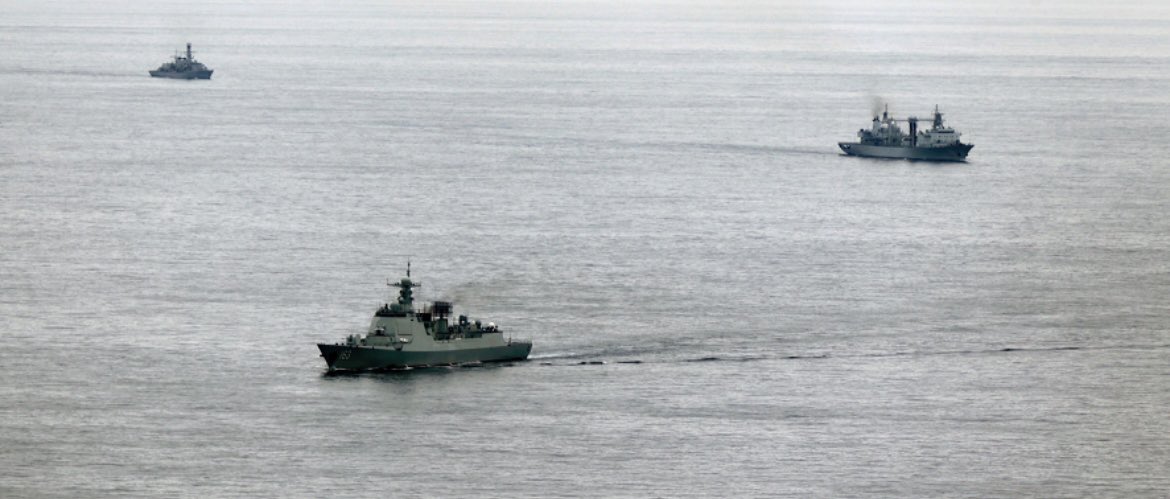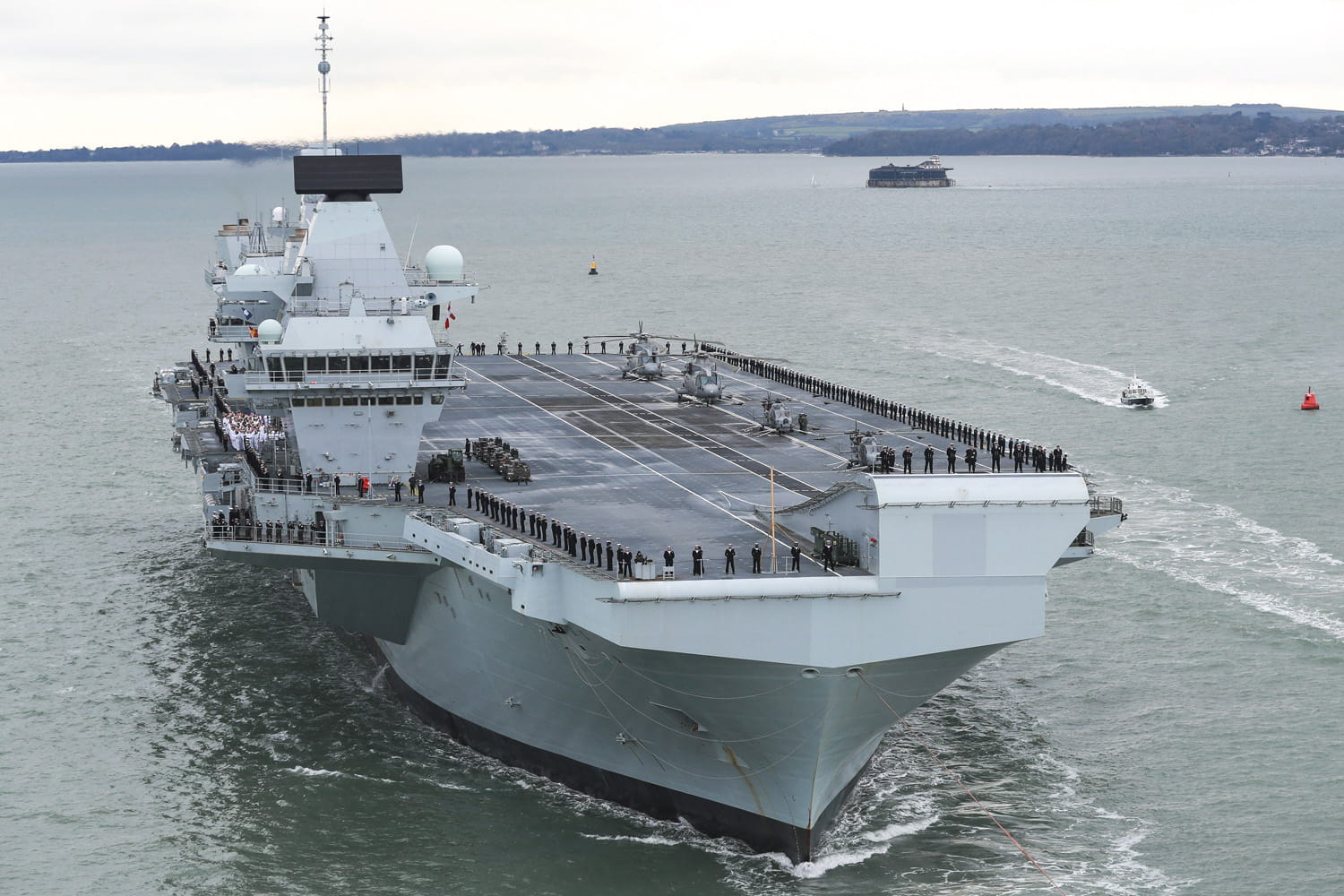A UK Royal Navy frigate monitored a Chinese naval task group as it traversed the English Channel, demonstrating its maritime vigilance. This highlighted the UK Minister for the Armed Forces’ assertion of the Royal Navy’s dedication “to safeguard the sovereignty of UK waters.”
According to the Royal Navy, a flotilla of Chinese warships has been closely monitored by a Royal Navy frigate while traversing the English Channel.
HMS Richmond, stationed in Plymouth, followed the Chinese naval group closely during its second passage near the UK within three weeks.
The Chinese task force, comprising the 7,500-ton destroyer Jiaozuo and the 23,400-ton supply ship Honghu, was returning from St Petersburg after participating in the Russian Navy Day.
The Royal Navy, in collaboration with NATO partners, ensured that the vessels were under constant surveillance as they navigated from the North Sea through the Channel, exercising their right of passage through UK waters.

Armed Forces Minister Luke Pollard emphasized the significance of these monitoring operations, stating, “These escort missions are a testament to the Royal Navy’s commitment to upholding the sovereignty of UK waters. Partnering with our allies to bolster Euro-Atlantic security remains a key priority for the government.”
Pollard also commended the crew of HMS Richmond for their professionalism, noting their role in ensuring a secure and orderly transit and reinforcing national security at home and abroad.
HMS Richmond took over the monitoring from the French naval vessel Commandant Blaison, which had tracked the Chinese ships beyond French waters. The surveillance continued into the North Sea, where the patrol ship Pollux of the Belgian Navy took over tracking Jiaozuo and Honghu.
The Royal Navy frigate utilized its helicopter, ‘Brigand,’ from 814 Naval Air Squadron in Cornwall, along with advanced sensors and visual tracking, to maintain observation of the Chinese warships.
Although monitoring foreign warships is a standard duty for the Royal Navy, the UK Ministry of Defence tends to announce the tracking of Russian vessels more often than that of the Chinese People’s Liberation Army Navy.
Nonetheless, the Royal Navy previously monitored Chinese vessels in the English Channel when HMS St Albans and Westminster were dispatched in 2019 to track the Chinese destroyer Xian during a similar event in Russia.
UK & Chinese Naval Encounter Amid Tensions
The recent interaction between the Royal Navy and the Chinese Navy occurred in the backdrop of growing tensions in the Indo-Pacific region, a situation that the UK is keen to influence as it positions itself as a key player in the area.
This summer, the UK Armed Forces have significantly increased their presence in the Indo-Pacific, participating in major multinational exercises across air, land, and sea. These exercises are part of a broader effort to support regional security and stability.
Over the past month, Royal Air Force fighter jets have traveled over 9,000 miles to join training exercises with aircraft from more than 20 countries. Meanwhile, Royal Marines have conducted amphibious assault drills on Australia’s northern shores.
The UK Ministry of Defence highlighted that these deployments offered a valuable chance to showcase the UK Armed Forces’ global reach and ability to collaborate effectively with international partners.
In 2025, the HMS Prince of Wales, the Royal Navy’s aircraft carrier, is set to be deployed to the Indo-Pacific region. The Royal Navy Carrier Strike group, led by HMS Prince of Wales, will work with the Japanese Self-Defense Forces and other allies to “uphold peace and stability in the Indo-Pacific”.

Norway will also participate in this Carrier Strike Group deployment, adding its support to the mission in the Indo-Pacific.
However, China perceives the Royal Navy’s increased presence in the Indo-Pacific as a strategic move to “restrain” its influence. In response to the upcoming deployment of HMS Prince of Wales, the Chinese state-backed media outlet Global Times has criticized the UK’s naval capabilities sharply.
Global Times ridiculed the Royal Navy’s aircraft carriers, HMS Queen Elizabeth and HMS Prince of Wales, referring to them as “sieve ships” due to technical problems and serious water leakage incidents.
The outlet highlighted a 2021 incident where HMS Queen Elizabeth’s fighter jet crashed into the Mediterranean Sea during a global mission, further tarnishing the carrier’s reputation.
The media outlet expressed skepticism about the “sunset fleet” reaching the Pacific without facing further problems. Even if the carriers do reach their destination, the Global Times suggested that they are likely to operate with reduced effectiveness.
- Contact the author at ashishmichel(at)gmail.com
- Follow EurAsian Times on Google News




